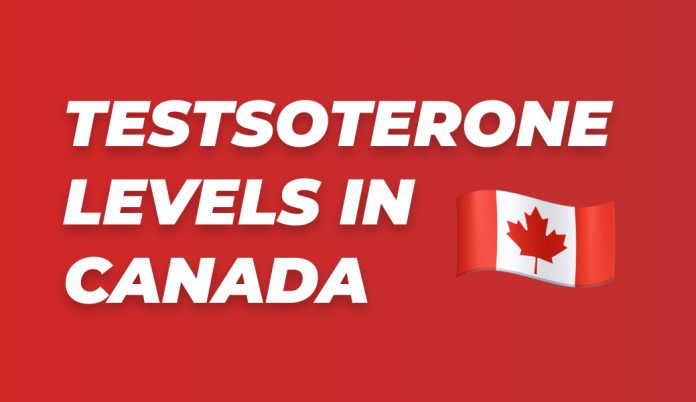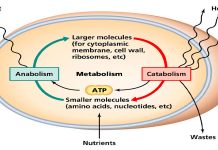Male sex hormone Testosterone is responsible for multiple processes in your body. It’s vital for muscle growth, mental health, and blood production. «Low Testosterone» doesn’t just sound bad; it bears the risk of multiple nasty symptoms.
Normal Testosterone Levels
So, where’s the line between unhealthy and NORMAL Testosterone levels in males in Canada (or practically anywhere in the world)? The Internet probably has answers, but none of them are precisely correct. The problem is – everyone relies on different numbers. Just for example:
- American Urological Association (AUA) states that numbers over approximately 300 ng/dL are normal;
- MD and Ph.D. expert in this article on a well-respected, WebMD-owned resource claims that everything between 270 ng/dL and 1070 ng/dL is normal;
- And Official guidelines from the Government of British Columbia give you 230ng/dL as the lowest healthy point.
So, is any Testosterone level above 230-300 ng/dL normal? Nope, it’s not.
Testosterone levels change with your age. Your T peaks in the teenage years (up to 2000 ng/dL), goes down to about 500-1000 when you grow up, and slowly decreases to about 300 ng/dL when you get older.
As a man in your 40s, you don’t want to compare your Testosterone levels to a 20-something guy, right?
This is the fullest table of age-adjusted Testosterone levels that you can get. It’s rather old, first published in 1996, but it studied about 10 thousand men, was proven to be accurate multiple times in the later years:
| Age | Total Test. (ng/dL) | Stand. Deviation | Free Test. (ng/dL) | Stand. Deviation |
| 25-34 | 617 | 170 | 12.3 | 2.8 |
| 35-44 | 668 | 212 | 10.3 | 1.2 |
| 45-54 | 606 | 213 | 9.1 | 2.2 |
| 55-64 | 562 | 195 | 8.3 | 2.1 |
| 65-74 | 524 | 197 | 6.9 | 2.3 |
| 75-84 | 471 | 169 | 6.0 | 2.3 |
| 85-100 | 376 | 134 | 5.4 | 2.3 |
Note that this table is in ng/dL, aka nanograms per decilitre.
If your test results look like smaller numbers, «8,1» or «10,3», they are most likely in nmol/L, aka nanomoles per liter. There are many online converters, like this one or this another one.
Also, you should know that those are AVERAGE numbers. It doesn’t mean that 615 ng/dL at 25 or 450 ng/dL at 40 is a sign of Testosterone deficiency. It’s just below average.
No official exact number for Testosterone deficiency exists. For most professionals in the field, it’s «somewhat around 300 ng/dL», but diagnosis may vary from case to case.
How To Get a Testosterone Test In Canada
Hey, but what if you didn’t take the test yet?
If you’re on gear and cycle anabolic steroids – you should do your blood works regularly, and not just Testosterone – your E2 (aka Estradiol, the main part of female sex hormone Estrogen) as well. The same goes for people on TRT.
This is what you need to know about Testosterone levels tests:
What Testosterone Test Do You Need
You have 3 kinds of Testosterone floating in your blood:
- SHBG-bounded Testosterone – the one that is already connected to a thing, called Sex Hormone Binding Globulin. It’s your body’s way of regulating the levels. SHBG-bounded Testosterone can’t do anything, and it’s mostly useless;
- Albumin-bounded Testosterone – the connection between a Test molecule and Albumin is weaker, and you can break it. However, it’s still NOT the kind of Testosterone that gives you all the muscle gains and libido. You still can access it – and that’s why it’s called Bioavailable Testosterone.
- Free Testosterone. The one that is unchained, ready for action, and actually can affect your body.
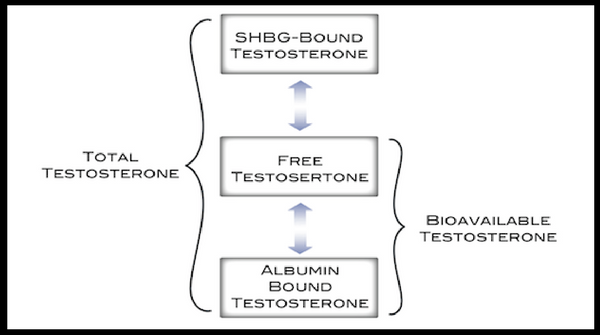
Of all Testosterone in your blood, only about 1,5-2% are Free Testosterone. It’s the smallest but the most valuable part. That’s the type you should measure in tests.
5 Kinds of Testosterone Levels Tests in Canada
There are several different methods used in laboratories across the country. Here they are, in our rank, starting from the worst:
- Shit tier: Saliva test, urine test, everything that’s not a blood test. Cheap, but not accurate at all. Guess the number from 1 to 1000 and save the money.
- Mid-tier 1: RIA Direct test. Commercial, popular, fast, but not so accurate. Still the cheapest legit option. Measures your Free Testosterone.
- Mid-tier 2: ECLIA test. Fast, not so expensive, accurate, but measures only your total Testosterone. All useless SHBG-bounded Testosterone is included in the results, so you’ll probably have to take an extra SHBG test and calculate your Free Testosterone yourself.
- Top tier: LC/MS test. It measures only your total Testosterone, but with high precision. The only popular CDC-approved method. The best thing you can get with Total Testosterone levels test in Canada.
- God tier: Equilibrium Ultrafiltration test. As fancy as it sounds, the most accurate and professional thing you can find. More expensive (not ungodly, though), hard to find, but absolutely worth it. Measures your Free Testosterone as precise as it can be measured in a moment.
If you can find Equilibrium Ultrafiltration testosterone levels test for a reasonable price in your town – that’s perfect. However, you can still choose LC/MS or ECLIA methods as well.
When to Take Testosterone Levels Test
Your natural Testosterone levels are unstable. They change frequently, and you can’t just catch the moment when the numbers are “more real”. In fact, there are two problems you should know about before looking at ANY test results.
Problem #1 – Time of the Day
Yeah, you can have one level in the morning and a completely different level in the evening on the same day. It’s a weird effect that was first covered in 1975 in this study. It states that you have your absolute highest Testosterone levels at about 4:00 AM and your absolute lowest at 8:00 PM.
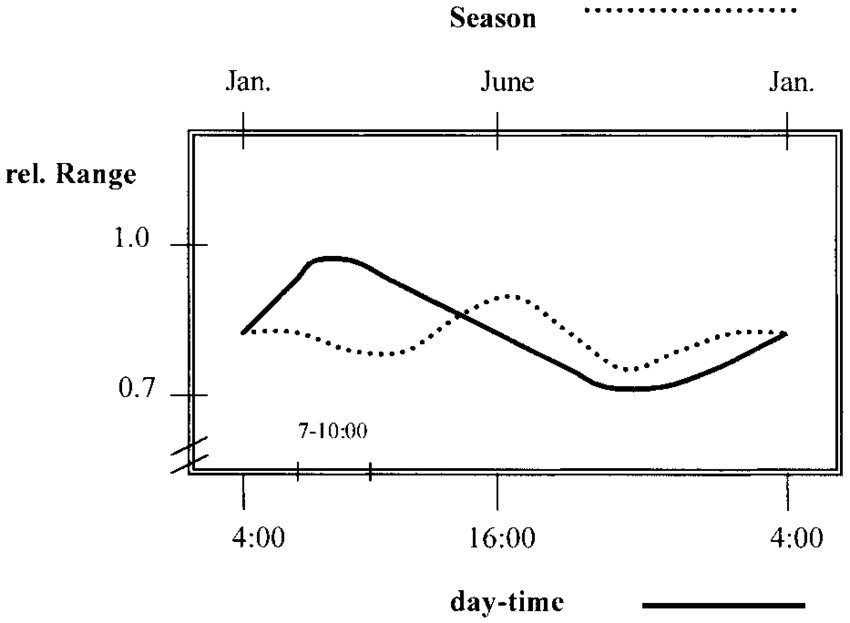
Of course, we won’t rely on a half-a-century old study – here is another one from 2009, and it proves the same numbers:
Your Testosterone peaks at 08:00 and gets to the bottom at 16:00. The difference can be as high as 25%.
Looks already weird enough? But wait, there’s more: the season can also change your Testosterone.
Problem #2 – Seasons
Yes, the time of the year also affects your Test levels. This 2012 large-scale study on about 11 thousand men worldwide clearly shows that your Testosterone to Estrogen ratio changes along with seasons.
Men are more likely to have high Testosterone levels in spring and low levels by autumn. The difference in the Testosterone to Estrogen ratio can be over 11%.
So, how weird is this? You get a test in the morning in May, another one in the evening in October, and boy, what a disaster – your Testosterone levels dropped by 36%!
Time to panic? Nope, not yet! Not before I give you the last problem.
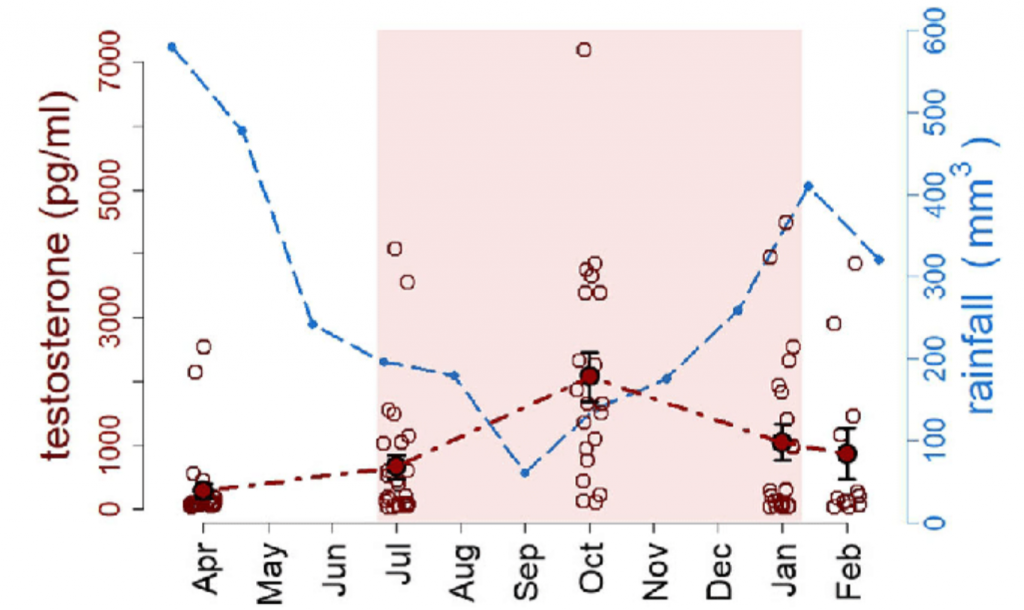
Best Place to Take Testosterone Levels Test?
There’s no such place. Different labs give you different results. They do it not because they are so greedy and just take your money to print a paper with random numbers. It’s just their methods are different. And the problem is far from being a local thing:
Different countries (as well as states or provinces) and different international medical organizations have different guidelines on Testosterone measurement.
You probably won’t travel to Europe to get your T levels tested, but you can have drastically different results in the same country. This experiment from 2006 was a big slap in the face for the industry:
Testosterone measurements from the same men in 25 different laboratories came out with a 350% difference. Practically ALL labs came up with different numbers.
Those are not all different types of laboratories: half of them were academic, and the other half were community-based. Still, while one lab issued 130 ng/dL results, the other one gave the same man 450 ng/dL. There were 3 «fake healthy» patients with actual Testosterone deficiency, and only 4 of all 25 labs gave age-adjusted results.
So, your Testosterone changes throughout the day, throughout the year, and all labs give different results. Should you forget about the whole idea of testing? Nope, nope at all.
Not even when I’ll give you the last issue: your Testosterone levels alone don’t matter at all.
Testosterone Sensitivity
Yup, I said it right: the number in your Testosterone levels test don’t mean practically anything unless you take SENSITIVITY to account.
You can have an average level, but your body’s sensitivity to Testosterone will be so low that you’ll get all symptoms of a severe deficiency;
OR
Your Test will be on the lowest part of the scale for your age, but you’ll feel great because of excellent sensitivity.
By sensitivity here, I mean your body’s natural ability to use Testosterone in your blood. It’s a genetic thing that forms while you’re still an embryo in your mom’s womb and stays the same through all your life.
You can’t change your Testosterone sensitivity with any food, exercise, or medical intervention. At least something is constant here, right?
It may sound weird, but that’s actually a good thing. It kills the whole idea of «ideal Testosterone levels in males». Instead, it gives you a much easier task:
Monitor the extremes and unhealthy symptoms, and ignore small changes in your Test levels within the healthy range.
High Testosterone (to an unhealthy degree) is a rare thing, and you can check whether you’re prone to it here in our list of high natural Testosterone level signs. It’s as simple as just walking to a mirror.
Symptoms of Low Testosterone Levels
A dangerously more common and even less enjoyable thing is LOW testosterone levels. This is how you can spot it:
- Low libido;
- Erection issues;
- Balding and hair thickness decrease;
- Weaker bones;
- Sleep issues (insomnia, sleepiness during the day, or both);
- Barely notable muscle gains from working out;
- Lean muscle mass decrease;
- Mood swings;
- Depression or higher irritability;
- Reduced energy and stamina.
Or, if you don’t like long lists, just memorize it like that: on low levels of male sex hormones, you don’t feel… manly. As easy as it gets.
Of course, you can get all these symptoms separately from other things, like stress or mental disorders. However, if at least three symptoms from the list above come together – it’s a sign that your Test is MAYBE lower than it should be with your natural Testosterone sensitivity. It’s not a direct call to action, but you should at least talk to your doc about it.
